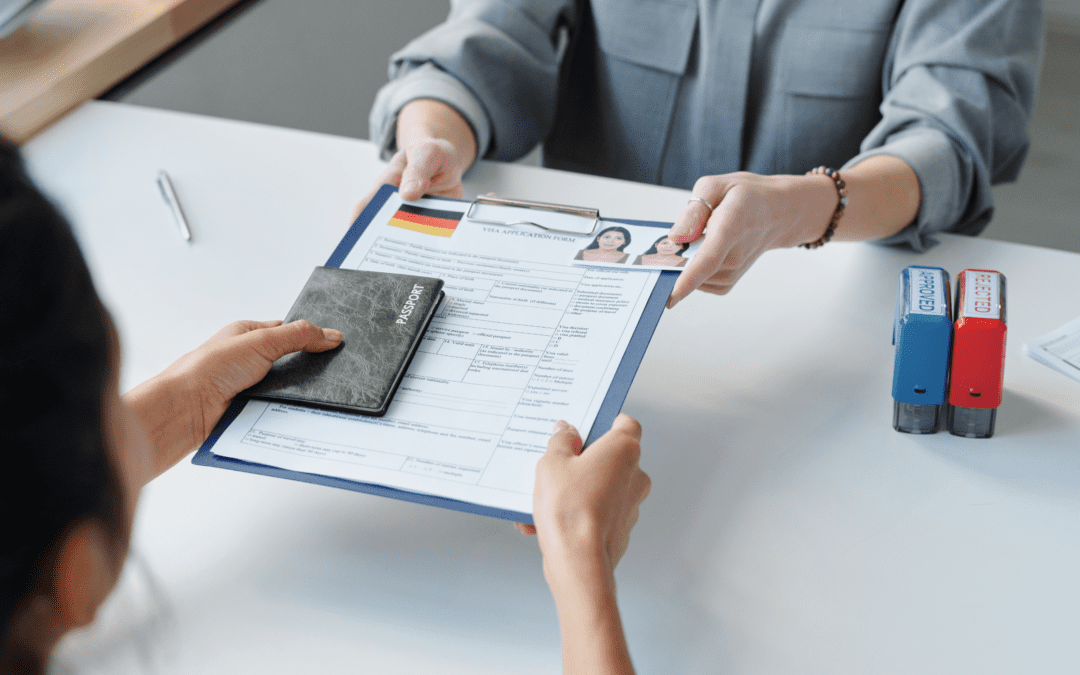Whether you’re pursuing an academic degree, vocational training, or participating in an exchange program, an immigration lawyer can guide you through the different visa options, such as F-1, J-1, and M-1 visas eventually leading to a work visa and green card. At Emandi Law Firm, we offer expertise not only in securing a visa but also in maintaining your legal status throughout your stay in the U.S. Below, we’ll explore what a student visa lawyer does and how to get a student visa.
How can an Immigration Lawyer Help Foreign Students?
A student visa lawyer helps you navigate the legal process of obtaining a visa to study in the U.S. Here’s how they can simplify the process for you:
- Visa Selection and Eligibility: Student visa lawyers assess your situation and guide you in choosing the appropriate visa type based on your educational goals. The most common visa for international students is the F-1 visa for academic studies, while vocational students may apply for an M-1 visa. Those participating in cultural exchange programs may be eligible for a J-1 visa.
- Application Guidance: We guide on the next step after the student visa, your work visa in the US, the requirements and process.
- Visa Interview Preparation: Many visa applications require an interview at the U.S. Embassy or Consulate. We help prepare you for this by explaining the types of questions you may be asked and what documents to bring.
- Status Maintenance: Student visa lawyers offer guidance on how to maintain your visa status, including advice on work opportunities such as Curricular Practical Training (CPT), Optional Practical Training (OPT), or STEM extensions for F-1 students.
- Visa Renewal or Change of Status: If your circumstances change, such as wanting to switch from an F-2 (dependent) visa to an F-1 (student) visa, a lawyer can help you navigate the process smoothly.
How to Get a Student Visa
Applying for a student visa requires careful planning and following specific steps. Here’s an overview of how to obtain an F-1 visa, the most common type for academic students:
1. Get Accepted to a U.S. School
Before applying for a student visa, you must first be accepted by a U.S. school, college, or university that is certified by the Student and Exchange Visitor Program (SEVP). Once accepted, the school will provide you with a Form I-20, which is necessary to apply for the visa.
2. Complete the Visa Application
After receiving the Form I-20, you’ll need to complete the DS-160 online visa application form and pay associated fees.
3. Prepare the Required Documents
You’ll need to gather several documents for your visa application, including:
- A valid passport (at least six months longer than your intended stay)
- A completed Form I-20 from your school
- Proof of financial support to cover tuition and living expenses
- A recent passport-style photograph
- Your visa application fee receipt
- Evidence of non-immigrant intent, such as ties to your home country
4. Attend the Visa Interview
You will likely be required to attend a visa interview at a U.S. Embassy or Consulate in your home country. During the interview, the consular officer will ask about your academic plans, financial situation, and intentions to return home after completing your studies.
5. Receive Your Visa and Prepare for Travel
If your visa application is approved, the U.S. Embassy or Consulate will place the visa in your passport, allowing you to travel to the U.S. Make sure to review any conditions attached to your visa, including when you can enter the U.S. and the date by which you must leave.
Why Hire an Immigration Lawyer?
While it is possible to apply for a student visa on your own, hiring a student visa lawyer can significantly reduce stress and increase your chances of approval. Speak with an Emandi Law Firm representative today and establish your gateway to a U.S.-based education.
